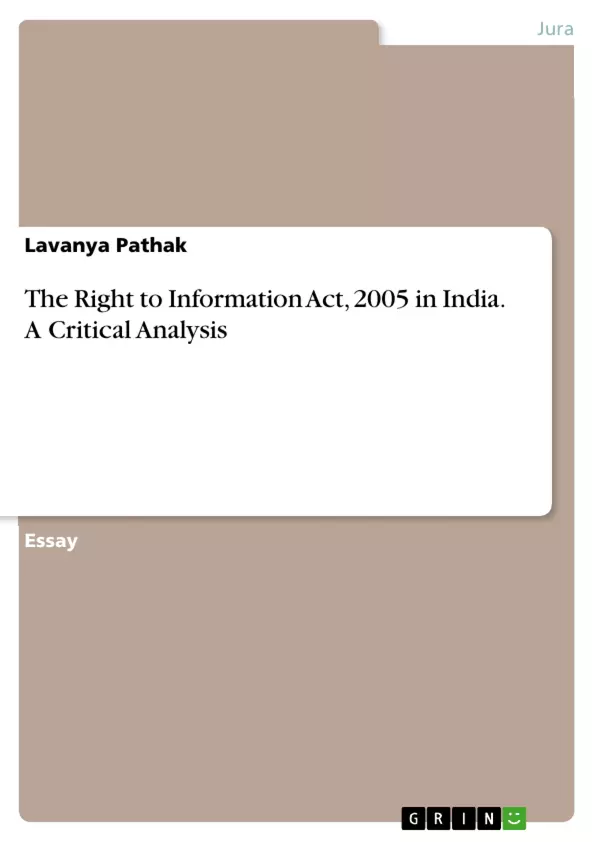Right to information—Subject to the provisions of this Act, all citizens shall have the right to information.
These words in many ways led our country to a brighter path in the direction of democracy and the act without a hint of doubt is revolutionary in itself.
Right to information is inherent in our Constitution in form of Article 19(1)(a) under Fundamental Rights-freedom of speech and expression. It has been held in a number of court judgments including the Supreme Court judgment in the case of Secretary, Ministry of Information and Broadcasting, Government of India & Ors. v. Cricket Association of Bengal & Anr. that the freedom of speech and expression includes the right to acquire information and disseminate it. However as the provision was not explicit and as there was no formal mechanism for seeking information the request for demand for information was rarely entertained sympathetically.
Inhaltsverzeichnis
- Einleitung
- Wesentliche Merkmale des RTI-Gesetzes von 2005
- Warum das Recht auf Information?
- Probleme im Zusammenhang mit RTI
- Schlussfolgerung und Vorschläge
Zielsetzung und Themenschwerpunkte
Dieser Text bietet eine kritische Analyse des Right to Information Act (RTI) von 2005 in Indien. Das Ziel ist es, die wichtigsten Merkmale des Gesetzes, seine Bedeutung für die indische Demokratie und die Herausforderungen, die bei seiner Umsetzung auftreten, zu beleuchten.
- Das Recht auf Information als grundlegendes Recht in Indien
- Wesentliche Merkmale und die Funktionsweise des RTI-Gesetzes
- Die Bedeutung von Transparenz und Rechenschaftspflicht in der Regierungsführung
- Kritikpunkte und Herausforderungen bei der Anwendung des RTI-Gesetzes
- Vorschläge zur Verbesserung der Effektivität des Gesetzes
Zusammenfassung der Kapitel
Einleitung
Das Kapitel beleuchtet die Entstehung und Verabschiedung des RTI-Gesetzes im Jahr 2005 und betont seine Bedeutung für die Stärkung der Demokratie in Indien.
Wesentliche Merkmale des RTI-Gesetzes von 2005
Dieses Kapitel beschreibt die wichtigsten Bestimmungen des RTI-Gesetzes, einschließlich des Rechts jedes Bürgers auf Informationen von öffentlichen Stellen, der Verpflichtung öffentlicher Stellen, Informationen bereitzustellen, und die entsprechenden Beschwerdestellen bei Informationsverweigerung.
Warum das Recht auf Information?
Dieser Abschnitt behandelt die rechtliche Grundlage des Rechts auf Information, die Bedeutung von Transparenz und Rechenschaftspflicht in der Regierungsführung und die Notwendigkeit von Bürgerbeteiligung in der Entscheidungsfindung.
Schlüsselwörter
Recht auf Information, RTI-Gesetz, Transparenz, Rechenschaftspflicht, Bürgerbeteiligung, Demokratie, Indien, öffentliche Stellen, Informationsverweigerung, Rechtsprechung, Whistleblower, Missbrauch des Gesetzes.
- Quote paper
- Lavanya Pathak (Author), 2017, The Right to Information Act, 2005 in India. A Critical Analysis, Munich, GRIN Verlag, https://www.hausarbeiten.de/document/358843


